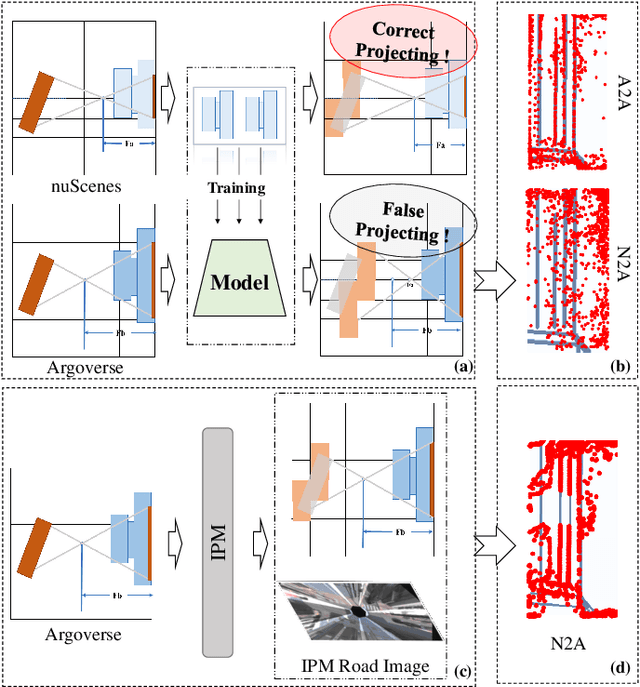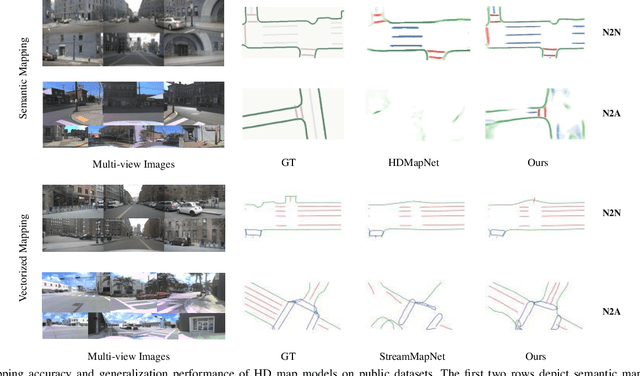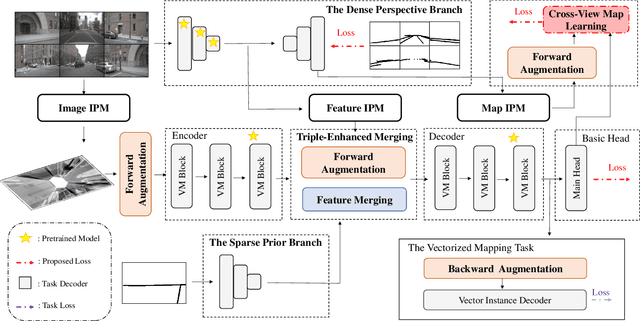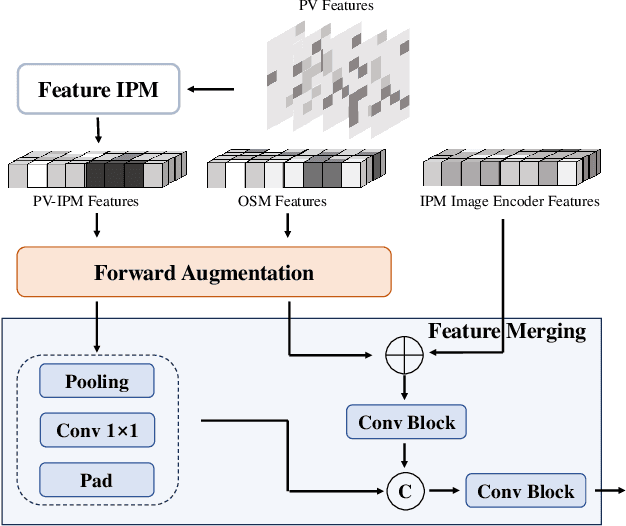Zhiyong Li
AVAM: Universal Training-free Adaptive Visual Anchoring Embedded into Multimodal Large Language Model for Multi-image Question Answering
Aug 25, 2025Abstract:The advancement of Multimodal Large Language Models (MLLMs) has driven significant progress in Visual Question Answering (VQA), evolving from Single to Multi Image VQA (MVQA). However, the increased number of images in MVQA inevitably introduces substantial visual redundancy that is irrelevant to question answering, negatively impacting both accuracy and efficiency. To address this issue, existing methods lack flexibility in controlling the number of compressed visual tokens and tend to produce discrete visual fragments, which hinder MLLMs' ability to comprehend images holistically. In this paper, we propose a straightforward yet universal Adaptive Visual Anchoring strategy, which can be seamlessly integrated into existing MLLMs, offering significant accuracy improvements through adaptive compression. Meanwhile, to balance the results derived from both global and compressed visual input, we further introduce a novel collaborative decoding mechanism, enabling optimal performance. Extensive experiments validate the effectiveness of our method, demonstrating consistent performance improvements across various MLLMs. The code will be publicly available.
Panoramic Out-of-Distribution Segmentation
May 06, 2025Abstract:Panoramic imaging enables capturing 360{\deg} images with an ultra-wide Field-of-View (FoV) for dense omnidirectional perception. However, current panoramic semantic segmentation methods fail to identify outliers, and pinhole Out-of-distribution Segmentation (OoS) models perform unsatisfactorily in the panoramic domain due to background clutter and pixel distortions. To address these issues, we introduce a new task, Panoramic Out-of-distribution Segmentation (PanOoS), achieving OoS for panoramas. Furthermore, we propose the first solution, POS, which adapts to the characteristics of panoramic images through text-guided prompt distribution learning. Specifically, POS integrates a disentanglement strategy designed to materialize the cross-domain generalization capability of CLIP. The proposed Prompt-based Restoration Attention (PRA) optimizes semantic decoding by prompt guidance and self-adaptive correction, while Bilevel Prompt Distribution Learning (BPDL) refines the manifold of per-pixel mask embeddings via semantic prototype supervision. Besides, to compensate for the scarcity of PanOoS datasets, we establish two benchmarks: DenseOoS, which features diverse outliers in complex environments, and QuadOoS, captured by a quadruped robot with a panoramic annular lens system. Extensive experiments demonstrate superior performance of POS, with AuPRC improving by 34.25% and FPR95 decreasing by 21.42% on DenseOoS, outperforming state-of-the-art pinhole-OoS methods. Moreover, POS achieves leading closed-set segmentation capabilities. Code and datasets will be available at https://github.com/MengfeiD/PanOoS.
HierDAMap: Towards Universal Domain Adaptive BEV Mapping via Hierarchical Perspective Priors
Mar 10, 2025Abstract:The exploration of Bird's-Eye View (BEV) mapping technology has driven significant innovation in visual perception technology for autonomous driving. BEV mapping models need to be applied to the unlabeled real world, making the study of unsupervised domain adaptation models an essential path. However, research on unsupervised domain adaptation for BEV mapping remains limited and cannot perfectly accommodate all BEV mapping tasks. To address this gap, this paper proposes HierDAMap, a universal and holistic BEV domain adaptation framework with hierarchical perspective priors. Unlike existing research that solely focuses on image-level learning using prior knowledge, this paper explores the guiding role of perspective prior knowledge across three distinct levels: global, sparse, and instance levels. With these priors, HierDA consists of three essential components, including Semantic-Guided Pseudo Supervision (SGPS), Dynamic-Aware Coherence Learning (DACL), and Cross-Domain Frustum Mixing (CDFM). SGPS constrains the cross-domain consistency of perspective feature distribution through pseudo labels generated by vision foundation models in 2D space. To mitigate feature distribution discrepancies caused by spatial variations, DACL employs uncertainty-aware predicted depth as an intermediary to derive dynamic BEV labels from perspective pseudo-labels, thereby constraining the coarse BEV features derived from corresponding perspective features. CDFM, on the other hand, leverages perspective masks of view frustum to mix multi-view perspective images from both domains, which guides cross-domain view transformation and encoding learning through mixed BEV labels. The proposed method is verified on multiple BEV mapping tasks, such as BEV semantic segmentation, high-definition semantic, and vectorized mapping. The source code will be made publicly available at https://github.com/lynn-yu/HierDAMap.
Resource-Efficient Affordance Grounding with Complementary Depth and Semantic Prompts
Mar 04, 2025Abstract:Affordance refers to the functional properties that an agent perceives and utilizes from its environment, and is key perceptual information required for robots to perform actions. This information is rich and multimodal in nature. Existing multimodal affordance methods face limitations in extracting useful information, mainly due to simple structural designs, basic fusion methods, and large model parameters, making it difficult to meet the performance requirements for practical deployment. To address these issues, this paper proposes the BiT-Align image-depth-text affordance mapping framework. The framework includes a Bypass Prompt Module (BPM) and a Text Feature Guidance (TFG) attention selection mechanism. BPM integrates the auxiliary modality depth image directly as a prompt to the primary modality RGB image, embedding it into the primary modality encoder without introducing additional encoders. This reduces the model's parameter count and effectively improves functional region localization accuracy. The TFG mechanism guides the selection and enhancement of attention heads in the image encoder using textual features, improving the understanding of affordance characteristics. Experimental results demonstrate that the proposed method achieves significant performance improvements on public AGD20K and HICO-IIF datasets. On the AGD20K dataset, compared with the current state-of-the-art method, we achieve a 6.0% improvement in the KLD metric, while reducing model parameters by 88.8%, demonstrating practical application values. The source code will be made publicly available at https://github.com/DAWDSE/BiT-Align.
TS-CGNet: Temporal-Spatial Fusion Meets Centerline-Guided Diffusion for BEV Mapping
Mar 04, 2025Abstract:Bird's Eye View (BEV) perception technology is crucial for autonomous driving, as it generates top-down 2D maps for environment perception, navigation, and decision-making. Nevertheless, the majority of current BEV map generation studies focusing on visual map generation lack depth-aware reasoning capabilities. They exhibit limited efficacy in managing occlusions and handling complex environments, with a notable decline in perceptual performance under adverse weather conditions or low-light scenarios. Therefore, this paper proposes TS-CGNet, which leverages Temporal-Spatial fusion with Centerline-Guided diffusion. This visual framework, grounded in prior knowledge, is designed for integration into any existing network for building BEV maps. Specifically, this framework is decoupled into three parts: Local mapping system involves the initial generation of semantic maps using purely visual information; The Temporal-Spatial Aligner Module (TSAM) integrates historical information into mapping generation by applying transformation matrices; The Centerline-Guided Diffusion Model (CGDM) is a prediction module based on the diffusion model. CGDM incorporates centerline information through spatial-attention mechanisms to enhance semantic segmentation reconstruction. We construct BEV semantic segmentation maps by our methods on the public nuScenes and the robustness benchmarks under various corruptions. Our method improves 1.90%, 1.73%, and 2.87% for perceived ranges of 60x30m, 120x60m, and 240x60m in the task of BEV HD mapping. TS-CGNet attains an improvement of 1.92% for perceived ranges of 100x100m in the task of BEV semantic mapping. Moreover, TS-CGNet achieves an average improvement of 2.92% in detection accuracy under varying weather conditions and sensor interferences in the perception range of 240x60m. The source code will be publicly available at https://github.com/krabs-H/TS-CGNet.
Unveiling the Potential of Segment Anything Model 2 for RGB-Thermal Semantic Segmentation with Language Guidance
Mar 04, 2025Abstract:The perception capability of robotic systems relies on the richness of the dataset. Although Segment Anything Model 2 (SAM2), trained on large datasets, demonstrates strong perception potential in perception tasks, its inherent training paradigm prevents it from being suitable for RGB-T tasks. To address these challenges, we propose SHIFNet, a novel SAM2-driven Hybrid Interaction Paradigm that unlocks the potential of SAM2 with linguistic guidance for efficient RGB-Thermal perception. Our framework consists of two key components: (1) Semantic-Aware Cross-modal Fusion (SACF) module that dynamically balances modality contributions through text-guided affinity learning, overcoming SAM2's inherent RGB bias; (2) Heterogeneous Prompting Decoder (HPD) that enhances global semantic information through a semantic enhancement module and then combined with category embeddings to amplify cross-modal semantic consistency. With 32.27M trainable parameters, SHIFNet achieves state-of-the-art segmentation performance on public benchmarks, reaching 89.8% on PST900 and 67.8% on FMB, respectively. The framework facilitates the adaptation of pre-trained large models to RGB-T segmentation tasks, effectively mitigating the high costs associated with data collection while endowing robotic systems with comprehensive perception capabilities. The source code will be made publicly available at https://github.com/iAsakiT3T/SHIFNet.
One-Shot Affordance Grounding of Deformable Objects in Egocentric Organizing Scenes
Mar 03, 2025Abstract:Deformable object manipulation in robotics presents significant challenges due to uncertainties in component properties, diverse configurations, visual interference, and ambiguous prompts. These factors complicate both perception and control tasks. To address these challenges, we propose a novel method for One-Shot Affordance Grounding of Deformable Objects (OS-AGDO) in egocentric organizing scenes, enabling robots to recognize previously unseen deformable objects with varying colors and shapes using minimal samples. Specifically, we first introduce the Deformable Object Semantic Enhancement Module (DefoSEM), which enhances hierarchical understanding of the internal structure and improves the ability to accurately identify local features, even under conditions of weak component information. Next, we propose the ORB-Enhanced Keypoint Fusion Module (OEKFM), which optimizes feature extraction of key components by leveraging geometric constraints and improves adaptability to diversity and visual interference. Additionally, we propose an instance-conditional prompt based on image data and task context, effectively mitigates the issue of region ambiguity caused by prompt words. To validate these methods, we construct a diverse real-world dataset, AGDDO15, which includes 15 common types of deformable objects and their associated organizational actions. Experimental results demonstrate that our approach significantly outperforms state-of-the-art methods, achieving improvements of 6.2%, 3.2%, and 2.9% in KLD, SIM, and NSS metrics, respectively, while exhibiting high generalization performance. Source code and benchmark dataset will be publicly available at https://github.com/Dikay1/OS-AGDO.
Multi-Keypoint Affordance Representation for Functional Dexterous Grasping
Feb 27, 2025



Abstract:Functional dexterous grasping requires precise hand-object interaction, going beyond simple gripping. Existing affordance-based methods primarily predict coarse interaction regions and cannot directly constrain the grasping posture, leading to a disconnection between visual perception and manipulation. To address this issue, we propose a multi-keypoint affordance representation for functional dexterous grasping, which directly encodes task-driven grasp configurations by localizing functional contact points. Our method introduces Contact-guided Multi-Keypoint Affordance (CMKA), leveraging human grasping experience images for weak supervision combined with Large Vision Models for fine affordance feature extraction, achieving generalization while avoiding manual keypoint annotations. Additionally, we present a Keypoint-based Grasp matrix Transformation (KGT) method, ensuring spatial consistency between hand keypoints and object contact points, thus providing a direct link between visual perception and dexterous grasping actions. Experiments on public real-world FAH datasets, IsaacGym simulation, and challenging robotic tasks demonstrate that our method significantly improves affordance localization accuracy, grasp consistency, and generalization to unseen tools and tasks, bridging the gap between visual affordance learning and dexterous robotic manipulation. The source code and demo videos will be publicly available at https://github.com/PopeyePxx/MKA.
GenMapping: Unleashing the Potential of Inverse Perspective Mapping for Robust Online HD Map Construction
Sep 13, 2024



Abstract:Online High-Definition (HD) maps have emerged as the preferred option for autonomous driving, overshadowing the counterpart offline HD maps due to flexible update capability and lower maintenance costs. However, contemporary online HD map models embed parameters of visual sensors into training, resulting in a significant decrease in generalization performance when applied to visual sensors with different parameters. Inspired by the inherent potential of Inverse Perspective Mapping (IPM), where camera parameters are decoupled from the training process, we have designed a universal map generation framework, GenMapping. The framework is established with a triadic synergy architecture, including principal and dual auxiliary branches. When faced with a coarse road image with local distortion translated via IPM, the principal branch learns robust global features under the state space models. The two auxiliary branches are a dense perspective branch and a sparse prior branch. The former exploits the correlation information between static and moving objects, whereas the latter introduces the prior knowledge of OpenStreetMap (OSM). The triple-enhanced merging module is crafted to synergistically integrate the unique spatial features from all three branches. To further improve generalization capabilities, a Cross-View Map Learning (CVML) scheme is leveraged to realize joint learning within the common space. Additionally, a Bidirectional Data Augmentation (BiDA) module is introduced to mitigate reliance on datasets concurrently. A thorough array of experimental results shows that the proposed model surpasses current state-of-the-art methods in both semantic mapping and vectorized mapping, while also maintaining a rapid inference speed. The source code will be publicly available at https://github.com/lynn-yu/GenMapping.
Learning Granularity-Aware Affordances from Human-Object Interaction for Tool-Based Functional Grasping in Dexterous Robotics
Jun 30, 2024



Abstract:To enable robots to use tools, the initial step is teaching robots to employ dexterous gestures for touching specific areas precisely where tasks are performed. Affordance features of objects serve as a bridge in the functional interaction between agents and objects. However, leveraging these affordance cues to help robots achieve functional tool grasping remains unresolved. To address this, we propose a granularity-aware affordance feature extraction method for locating functional affordance areas and predicting dexterous coarse gestures. We study the intrinsic mechanisms of human tool use. On one hand, we use fine-grained affordance features of object-functional finger contact areas to locate functional affordance regions. On the other hand, we use highly activated coarse-grained affordance features in hand-object interaction regions to predict grasp gestures. Additionally, we introduce a model-based post-processing module that includes functional finger coordinate localization, finger-to-end coordinate transformation, and force feedback-based coarse-to-fine grasping. This forms a complete dexterous robotic functional grasping framework GAAF-Dex, which learns Granularity-Aware Affordances from human-object interaction for tool-based Functional grasping in Dexterous Robotics. Unlike fully-supervised methods that require extensive data annotation, we employ a weakly supervised approach to extract relevant cues from exocentric (Exo) images of hand-object interactions to supervise feature extraction in egocentric (Ego) images. We have constructed a small-scale dataset, FAH, which includes near 6K images of functional hand-object interaction Exo- and Ego images of 18 commonly used tools performing 6 tasks. Extensive experiments on the dataset demonstrate our method outperforms state-of-the-art methods. The code will be made publicly available at https://github.com/yangfan293/GAAF-DEX.
 Add to Chrome
Add to Chrome Add to Firefox
Add to Firefox Add to Edge
Add to Edge